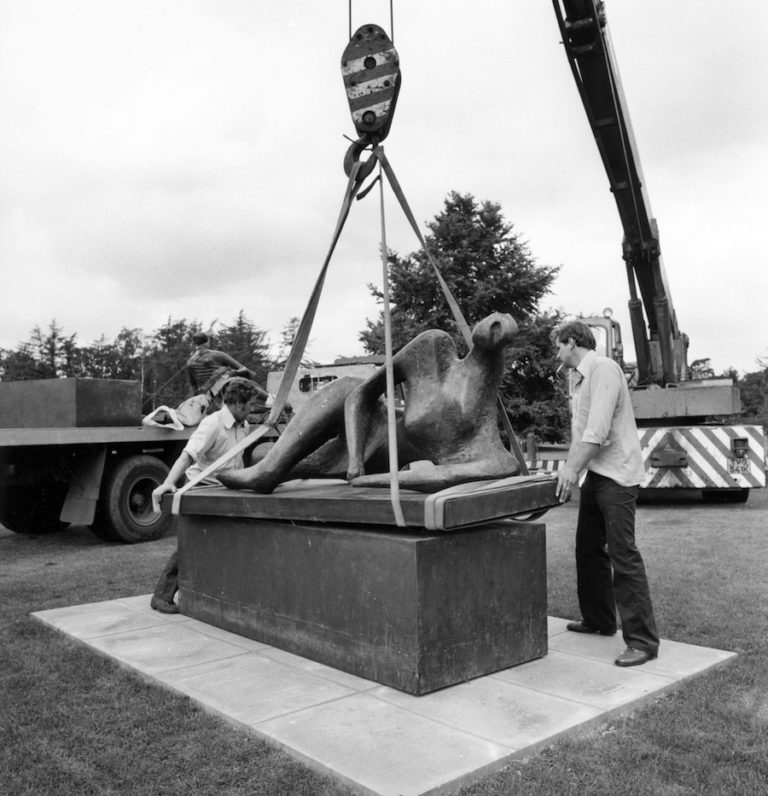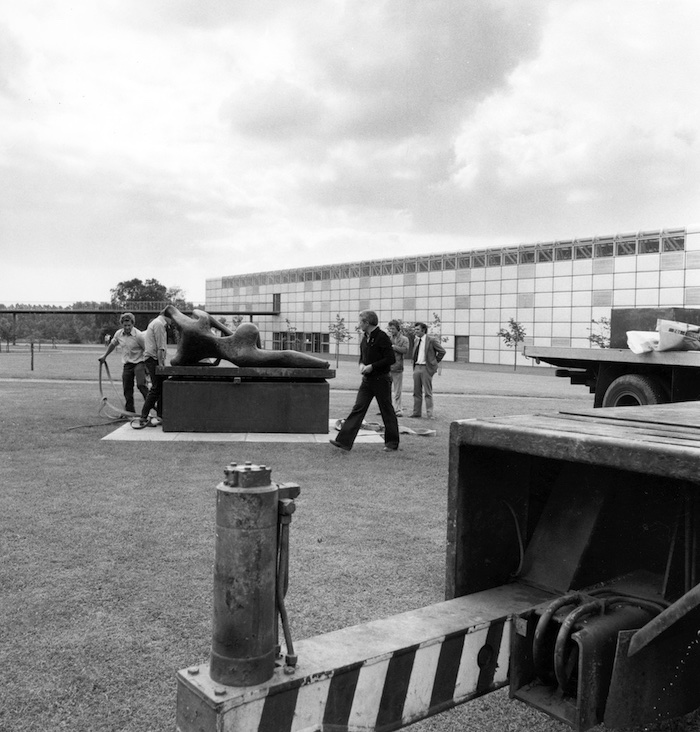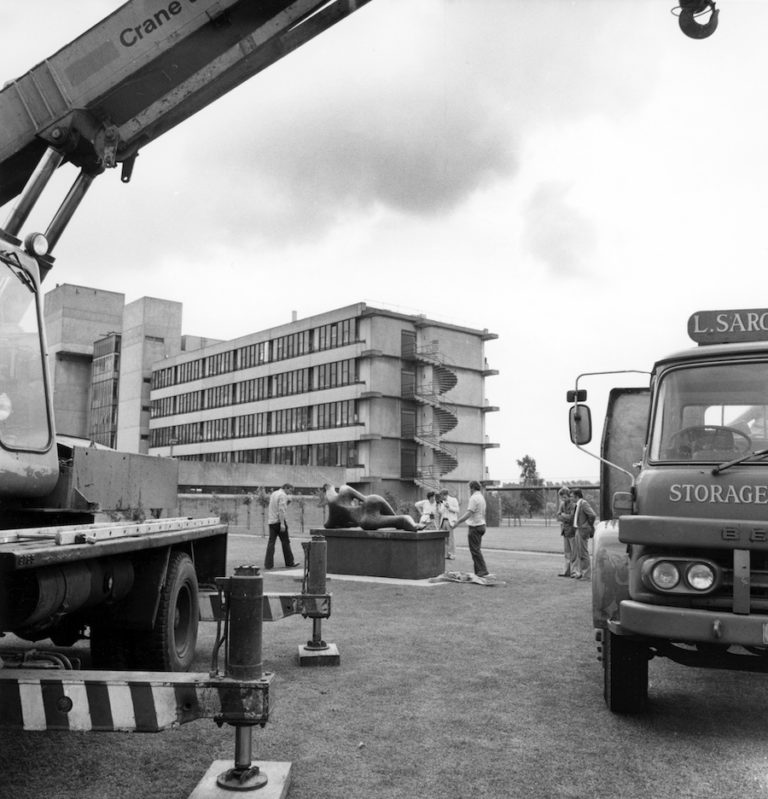Reclining Figure
Henry Moore
Life Story
Reclining Figure was originally carved in ironstone in 1930 from a stone found on the beach. However, it proved to be unsuitable for a lasting sculpture, as the stone’s instability meant that parts began to disintegrate. Some other works that Moore made in ironstone had already disintegrated, so when the ironstone Reclining Figure was damaged, he decided to cast it in bronze as a lasting copy. Robert and Lisa Sainsbury had bought the sculpture in 1935 and, with their permission, Moore borrowed it back in 1962 in order to create a mould to cast the bronze.
In 1930 Moore had not yet embraced bronze for its ability to make multiples; he only began to cast works in bronze consistently in the 1950s. This enabled him to make works in editions to meet customer demand, and create larger works for the outdoors. By 1962, he would cast small works up to an edition of twelve, plus two artist copies. Reclining Figure was cast in an edition of just two: one given to the Sainsburys and one for Moore’s wife, Irina. It would have been frowned upon to make any more, as the Sainsburys bought the ironstone version on the understanding that it was a unique sculpture. Both the ironstone and the bronze cast are now in the Sainsbury Centre collection.
Early on, Moore cast some of his own works in bronze in his studio, but it was more efficient to have his works cast professionally at foundries. He tended to use the Noack foundry in Berlin for his large sculptures, but this smaller work was cast at the Fiorini Foundry in London. Moore formed relationships with a number of foundries across Europe, and the extent of his output meant that he had to distribute his production between them in order to meet demand. He worked closely with the foundries, visiting them regularly to monitor progress, particularly with big projects. He was especially involved in the finishing process, often patinating the bronze himself. Varying the chemicals used for patination achieves different-coloured surfaces. For Reclining Figure, Moore chose a patina that would emulate the colour of the ironstone, although in reality it is slightly darker, and the surface is more even than the natural irregularities in the stone of the original.
Tania Moore, September 2020
Exhibitions
'Henry Moore at Dulwich Picture Gallery', Dulwich Picture Gallery, London, 12/5/2004 - 12/9/2004
Further Reading
Steven Hooper (ed.), Robert and Lisa Sainsbury Collection, volume 1 (Norwich: University of East Anglia, 1997)
Ann Garrould, Anita Feldman Bennett and Ian Dejardin, Henry Moore at Dulwich Picture Gallery (London: Scala Publishers, 2004)
Tania Moore, Henry Moore: Friendships and Legacies (Norwich: Sainsbury Centre, 2020)
Provenance
Given to Robert and Lisa Sainsbury by Henry Moore in 1962.
Donated to the University of East Anglia in 1973 (Sainsbury Centre).
Not on display
Title/Description: Reclining Figure
Artist/Maker: Henry Moore
Born: 1962 (from an original of 1930)
Object Type: Sculpture
Materials: Bronze
Measurements: h. 92 x w. 182 x d. 50 mm
Accession Number: 81
Historic Period: 20th century
Production Place: Britain, England, Europe
Copyright: © Reproduced by permission of the Henry Moore Foundation
Credit Line: Donated by Robert and Lisa Sainsbury, 1973











